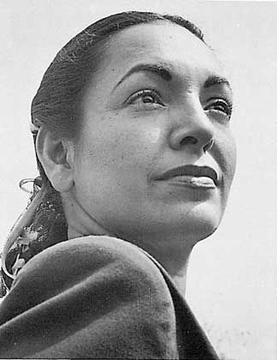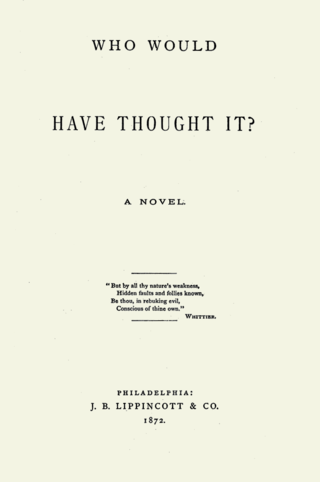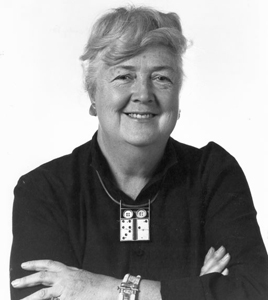Related Research Articles

Galisteo is a census-designated place (CDP) in Santa Fe County, New Mexico, United States. It is part of the Santa Fe, New Mexico Metropolitan Statistical Area. The population was 253 at the 2020 census.

Los Cerrillos is a census-designated place (CDP) in Santa Fe County, New Mexico, United States. It is part of the Santa Fe, New Mexico Metropolitan Statistical Area. The population was 229 at the 2000 census. Accessible from State Highway 14 or The Turquoise Trail, Cerrillos is on the road from Santa Fe to Albuquerque, closer to Santa Fe. There are several shops and galleries, a post office, and the Cerrillos Hills State Park, which has five miles of hiking trails. The Cerrillos Turquoise Mining Museum contains hundreds of artifacts from the American Old West and the Cerrillos Mining District. It also displays cardboard cutouts of characters from the film Young Guns and information on other movies which have been filmed in and around Cerrillos.

Katherine Dávalos Ortega is a former politician who was the 38th Treasurer of the United States. She served from September 26, 1983 to July 1, 1989 under Presidents Ronald Reagan and then George H. W. Bush. Ortega also has the distinction of being the first female bank president in the state of California.

The Congressional Hispanic Caucus (CHC) is an organization of 38 Democratic members of the United States Congress of Hispanic and Latino descent. The Caucus focuses on issues affecting Hispanics and Latinos in the United States. The CHC was founded in December 1976 as a legislative service organization of the United States House of Representatives. The CHC is organized as a Congressional Member organization, governed under the Rules of the U.S. House of Representatives.

Josefina Fierro, later Josefina Fierro de Bright, was a Mexican-American leader who helped organize resistance against discrimination in the American Southwest during the Great Depression. She was the daughter of immigrants who had fled revolution in Mexico to settle in California. She grew up in Los Angeles and the San Joaquin Valley.

Mutualistas were community-based mutual aid societies created by Mexican immigrants in the late 19th century United States. According to media analyst Charles M. Tatum, mutualistas
"provided most immigrants with a connection to their mother country and served to bring them together to meet their survival needs in a new and alien country. Cultural activities, education, health care, insurance coverage, legal protection and advocacy before police and immigration authorities, and anti-defamation activities were the main functions of these associations.
The United Cannery, Agricultural, Packing, and Allied Workers of America (UCAPAWA) was a labor union formed in 1937 and incorporated large numbers of Mexican, black, Asian, and Anglo food processing workers under its banner. The founders envisioned a national decentralized labor organization with power flowing from the bottom up. Although it was short-lived, the UCAPAWA influenced the lives of many workers and had a major impact for both women and minority workers in the union.
Irma Lerma Rangel was an attorney and Democratic state legislator based in Kingsville, Texas. She was the first Mexican-American woman elected to serve in the Texas House of Representatives and the first Mexican-American female attorney in Kingsville.

Gerald P. "Jerry" Ortiz y Pino is an American politician and social worker serving as a member of the New Mexico Senate, where he has represented the 12th district since 2005.

Who Would Have Thought It? (1872) is a semi-autobiographical novel written by María Ruiz de Burton. After a long period in which Ruiz de Burton's work was almost completely unknown, the novel was rediscovered by critics interested in the history of Mexican-American literature, and republished to acclaim in 1995. Yet Ruiz de Burton's life was not particularly typical of the Mexican-American experience, as she married a prominent US officer, Captain Henry S. Burton, in the aftermath of the Mexican–American War and became acquainted with many powerful people in Washington D.C. The novel reflects her ambiguous position between the small in number Californio elite and the Anglo-American populace, which formed the majority of the United States population.

Francis Vincent Ortiz Jr. was an American diplomat who served as United States Ambassador to Argentina from 1983 to 1986, United States Ambassador to Peru from 1981 to 1983, United States Ambassador to Guatemala from 1979 to 1980 and Ambassador of the United States to Barbados, and Grenada as well as Special Representative to Dominica, Saint Lucia, Antigua, St. Christopher-Nevis-Anguilla, and St. Vincent from 1977 to 1979.

María Adelina Isabel Emilia "Nina" Otero-Warren was an American woman's suffragist, educator, and politician. Otero-Warren created a legacy of civil service through her work in education, politics, and public health. She became one of New Mexico's first female government officials when she served as Santa Fe Superintendent of Instruction from 1917 to 1929. Otero-Warren was the first Latina to run for Congress, running unsuccessfully in 1922 as the Republican nominee to represent New Mexico's at-large district in the U.S. House of Representatives.

Lucy G. Acosta was a Mexican-American activist with the League of United Latin American Citizens (LULAC). She was a political appointee under various mayors of El Paso, Texas. She was elected to the Texas Women's Hall of Fame in 1987. The Lucy G. Acosta Humanitarian Awards were named in her honor, and have been presented every year since 1993.

Concha Michel (1899–1990) was a Mexican singer-songwriter, political activist, playwright, and a researcher who published several projects on the culture of indigenous communities. She was one of the few women who performed in the corrido style. She created the Institute of Folklore in Michoacan and was one of the first collectors of folklore and preservers of the traditions of the Mexican people. She was a cultural icon having relationships with two presidents, and a broad range of Mexico's most prominent artists including Diego Rivera, Frida Kahlo, Guadalupe Marín, Tina Modotti, Elena Poniatowska, Anita Brenner and others.

Ramona Solberg (1921–2005) created eccentric yet familiar jewelry using found objects; she was an influential teacher at the University of Washington School of Art and is often referred to as the "grandmother of Northwest found-art jewelry". Additionally, she served as an art instructor and a prolific jewelry artist in and around Seattle for three decades.
Agueda Salazar Martínez, also known as "Doña Agueda," was an American artist, noted for her Chimayó-style woven rugs and blankets.
Sara Estela Ramírez was a Mexican teacher, journalist, labor organizer, activist, feminist, essayist, and poet, who lived in the U.S. state of Texas. She founded two daily literary periodicals, La Corregidora and Aurora. She has been considered a key member in the support of the Partido Liberal Mexicano, and an early precursor to the modern Chicana feminist movement.
Vicki Lynn Ruiz is an American historian who has written or edited 14 books and published over 60 essays. Her work focuses on Mexican-American women in the twentieth century. She is a recipient of the National Humanities Medal.
Alice Cardona was an activist and community organizer.

The New Mexico Office of the State Engineer is a state agency in New Mexico, located in the Concha Ortiz y Pino Building in Santa Fe. The agency is responsible for managing New Mexico water resources, including the supervision, measurement, appropriation, and distribution of surface and groundwater. The State Engineer, appointed by the Governor of New Mexico, serves as the agency's director, who concurrently acts as secretary of the New Mexico Interstate Stream Commission.
References
- ↑ Ruiz, Vicki (2006). Latinas in the United States, set: A Historical Encyclopedia. Bloomington: Indian University Press. ISBN 0253346800.
- ↑ "Concha Ortiz y Pino de Kleven, 96, Politician, Is Dead". New York Times. Associated Press. October 9, 2006. Retrieved 9 June 2017.
- ↑ Coulter, Lane; Dixon, Maurice Jr. (1990). New Mexican tinwork, 1840-1940. Albuquerque: University of New Mexico Press. p. 141. ISBN 0826311806.
- ↑ "Concha Ortiz y Pino · And Yet She Persisted ·". libomeka.unm.edu. Retrieved 2020-03-25.
- ↑ "Biography New Mexico's 'Gran Dama' Concha Ortiz y Pino de Kleven. | HispanicAd.com". hispanicad.com. Retrieved 2020-03-25.
- ↑ "Kleven, Concha Ortiz y Pino de". sflivingtreasures.org. Retrieved 2020-03-25.
- ↑ Ruiz, Vicki (1998). From Out of the Shadows: Mexican Women in Twentieth -Century America. Oxford University Press. p. 94. ISBN 9780195374773.
- 1 2 Ruiz, Vicki (1998). From Out of the Shadows: Mexican Women in Twentieth-Century America. Oxford University Press. pp. 92–95. ISBN 9780195374773.
- ↑ "Concha Ortiz y Pino de Kleven, 96, Politician, Is Dead". The New York Times. Associated Press. 2006-10-09. ISSN 0362-4331 . Retrieved 2024-06-23.